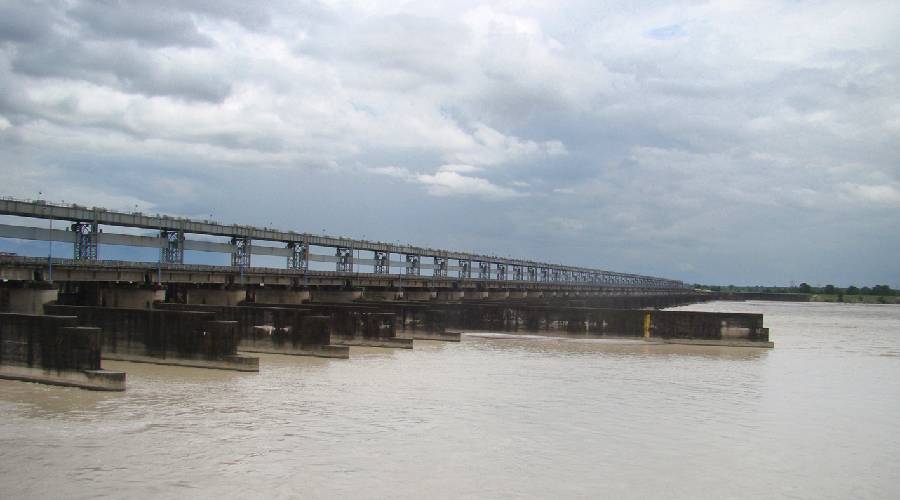The Bengal government has in principle decided to set up three hydropower projects in the Darjeeling hills, risking further offence to Dhaka which has been waiting more than a decade for a treaty on the sharing of the Teesta’s waters.
Two of the three planned Darjeeling projects are likely to reduce the volume of water in the Teesta that is available for irrigation, particularly during the December-April lean period when the demand for irrigation water goes up in Bangladesh.
A source said the Bengal government had given in-principle approval to the preparation of a detailed project report (DPR) on the Teesta Low Dam Project (TLDP) I & II, on the Bara Rangeet river, which will have a combined capacity to produce 71MW electricity. Similar approval has been given for a DPR on the Balason Hydro Electric Project (38MW) on the Balason and Rangbhang rivers, the source added.
“In-principle approval has been given also to prepare DPRs relating to 10 other small hydro projects. It, however, needs to be seen whether all these projects are feasible,” the source said. The TLDP I and II have generated much interest as the Bara Rangeet, on which they will come up, joins the Teesta which flows into Bangladesh. Dhaka has a right to a share of the Teesta’s waters. The treaty was to be signed in September 2011 but was stalled because of opposition from Bengal chief minister Mamata Banerjee.
Mamata contended that the Teesta lacks enough water to meet the irrigation needs of both countries, especially during the lean season. Over the past few years, Dhaka has repeatedly communicated to Delhi its discomfort at the delay in concluding the Teesta agreement. But there has been no progress on the matter because of the strained relations between Delhi and Calcutta.
The wounds in Dhaka got deeper after the Bengal irrigation department’s plans to complete two canals under the Teesta Barrage Project came to light. Sources in Bangladesh said the subject might come up for discussion between the two countries when Prime Minister Sheikh Hasina visits India later this year. Against this backdrop, the clutch of planned hydropower projects in north Bengal -- over and above the 11 hydropower projects in Sikkim -- has come as another piece of bad news for Dhaka, a source in the Bangladesh foreign policy establishment said.
With a general election expected in Bangladesh this year-end or in early January next year, a failure to seal the Teesta treaty is likely to compound problems for Hasina, perceived to be pro-India in her country.
Water is an emotive issue in Bangladesh. Although the planned hydropower plants are all run-of-the-river projects, which means the water taken to generate hydropower is again returned to the river, a river expert said that water used for energy generation is unavailable for irrigation.
For such hydel projects, water is drawn from the river in the daytime and used for power generation in the evening, when the demand for electricity peaks. It’s channelled back into the river late in the night, when there is hardly any demand for irrigation water, the source explained.
Low volumes of Teesta water and the consequently reduced flow of fertile silt have created large tracts of dry land, unsuitable for cultivation, in northern Bangladesh. “We cannot keep the Teesta issue hanging indefinitely, for it’s a matter of our rightful claim on the water and, more importantly, of the life of the river itself,” a source in Dhaka said, declining to be quoted because of the sensitivity of the issue.
River experts on the Indian side also believe that too much focus on using the Teesta for irrigation and energy generation might kill the river. The justification for completing the two canals to meet Indian irrigation needs is overstated, an expert said, referring to how the Teesta’s waters have proved inadequate to feed to capacity even the existing irrigation channels in the region.
“A substantial flow of water down the river is necessary for the transfer of sediment downstream.… The flow is also important for biodiversity. Often, these two positives are forgotten in the rush to use the river for irrigation and power,” a source said. He said the planners of the hydropower projects should draw lessons from the disaster in the Uttarakhand town of Joshimath, which has witnessed land subsidence and large-scale damage to buildings that some have blamed on a hydel project and its tunnel.
“One cannot forget that the Eastern Himalayas are unstable and characterised by very high rainfall. More hydropower projects mean more deforestation and the creation of tunnels using blasting technology. I think there’s a limit to how much we can interfere with nature,” a river expert said. However, Bengal power department officials argue that hydropower capacity needs to be augmented to reduce the dependence on thermal power.
“There are hydropower purchase obligations and green-power-generation mandates for each state. These are central government directives,” a source said. A river expert, however, asked whether hydropower projects can be called “green” in view of the Joshimath disaster. He said it was “sad” that state governments and central agencies like the NHPC, which is using the Teesta waters to generate hydropower in Sikkim, are going ahead with their own hydel projects without enough consultations with each other. “The problem is, there is very little discussion on how to save the river,” the expert said.











